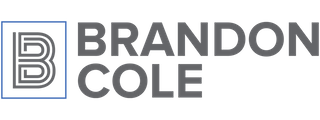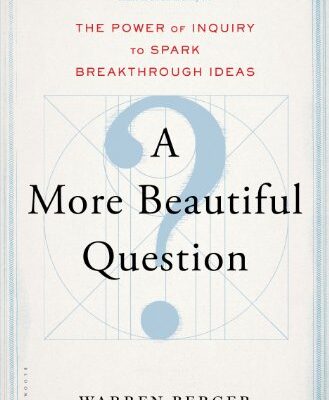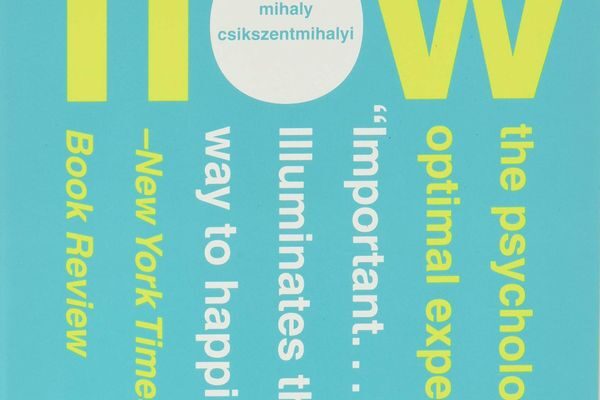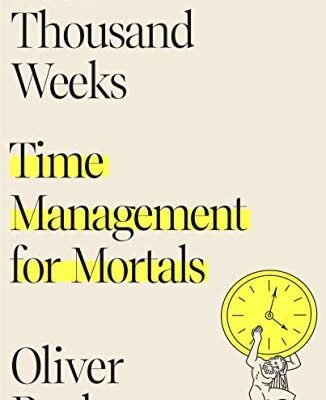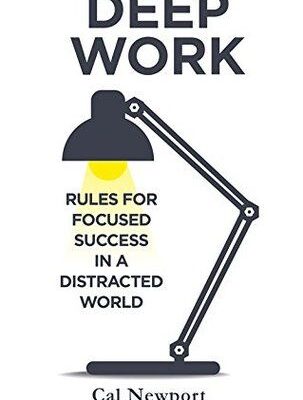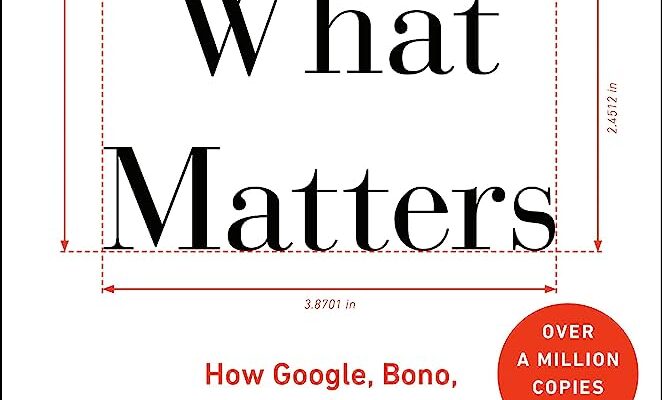Table of Contents
Building a Second Brain Summary
In the age of digital overload, it’s crucial to have systems that help us filter information and prioritize what matters most. “Building a Second Brain” by Tiago Forte offers a solution: storing reference and planning data outside of our minds. By doing so, we free up our mental capacity and concentrate on important tasks that require our attention. However, we should be mindful not to hoard information but instead carefully curate knowledge that aligns with our top priorities. If the information doesn’t contribute to future creations, it’s not currently useful.
Building a Second Brain Notes
Introduction The promise of a Second Brain
- The content we are consuming right now likely only has a few ideas that are relevant and actionable at this point in time. However, there are also likely other ideas within that content that could be actionable in our future.
- Knowledge and content is not shrinking. The people who can learn to harvest and leverage knowledge and content will be more aligned to be high achievers in the future.
Part 1 The foundation
Chapter 1 Where it all Started
A personal turning point
- Tiagos story is that of undiagnosed affliction. His process of taking action and collection and curating every price of content on his affliction lead him to be able to manage and control his pain.
- Being able to take pride in being the only person in the room to remember and important detail about a project is something I relate to.
Another shift discovering the power of sharing
- Human capital is the knowledge and knowhow embodied in humans. This is an asset worth five to ten times more than physical capital.
Chapter 2 What is a Second Brain
- Information is an essential component to building anything. We need to know things in order to build them.
- As a society we spend so much time ingesting information and trying to remember where everything is that we lose track of being creative, building relationships, or focusing on our own well being. Information and reference storage is better offloaded to machines that were designed to handle that very thing.
The Legacy of Commonplace Books
- A Commonplace book was a place that educated people used in the industrial revolution era to collection and reorganize ideas to contribute to creative works and social settings
The Digital Commonplace Book
- Technology enables us to create a modern Commonplace book that is easily searchable and organizable to make information collection and recall much faster
Rethinking Note taking: Notes as Knowledge Blocks
- We must break notes down so that they aren’t disposable but instead easy to repurpose and reuse endlessly
Chapter 3 How a Second Brain works
The Superpowers of a Second Brain
Second Brain superpower #1 Make our ideas more concrete
- It is important to be able to get ideas or thoughts out of your head into a form that you can interact with them. Otherwise it becomes easy to lose that information in your minds limited resources.
- An idea or thought that you have now might not immediately be actionable. If you don’t collect it somewhere you might not remember it when it could be actionable in the future
Second Brain superpower #2 Reveal New Associations Between Notes
- Because the second brain allows for notes to sit together from seemingly different sources we are able to make connections from distinctly different ideas
Second Brain superpower #3 Incubate our ideas overtime
- It is not likely that our best ideas or ways to handle a task or project will be able to be pulled out of our brains in a moments notice. Instead with a second brain we are able to pull from months or even years of notes of ideas.
Second Brain superpower #4 Sharpen our Unique Perspectives
- Being able to develop and support our perspectives requires comfort and familiarity with information that supports these perspectives. Having a weath of information allows you to comfortably support your ideas with a backing of material to show why you have these perspectives.
Introducing the CODE Method: The Four Steps to Remembering What Matters
Capture: Keep What Resonates
- There is so much content out there to consume and not near enough time to keep up with it all. We must assume the role of curator in our own content libraries to ensure that the content that we end up consuming answers a need or interest that is important to us.
- Adopting a curator mindset allows us to free ourselves from FOMO because we have meticulously set up a system that allows for only the important bits of information to reach us.
Organize: Save for Actionability
- Tiago suggests organizing notes by actionability within your current set of projects. This makes me wonder if content eventually gets lost in the archive and is difficult to surface
Distill: Find the Essence
- It is important to be able to boil down an idea into it’s core concept. This is because later when you revisit a note it is much easier to read a summary than to read several pages of notes to get the core idea again.
- We take notes of books so that when that information again becomes useful we don’t have to re-read the whole book again
Express: Show your Work
- We all have a creative side. Being able to express from the ideas we have is the ultimate way to put the information we gather to use. Otherwise we are just data hoarders.
Part 2 The Method: The Four Steps of CODE
Chapter 4 Capture: Keep what Resonates
Building a Private Collection of Knowledge
Creating a Knowledge Bank: How to Generate Interest from Your Thoughts
- Knowledge and experiences are all assets that can be further analyzed or grown over time
What not to Keep
- Sensitive information you want to keep secure
- Files with special format
- Very large files
- Files you want to work on collaboratively with others
Twelve Favorite Problems: A Nobel Prize Winner’s approach to Capturing
- What you capture can be decided using a test against your twelve favorite questions. Does the content help you in answering any of those questions?
Capturing Criteria: How to avoid keeping too much or too little
- Curation of content involves digging into the individual sections from a source and finding the golden nuggets in the information. You don’t have to save an entire article to get the peices that will mean the most to you.
Capture Criteria #1: Does it Inspire me?
- Keep a collection of quotes, ideas, and stories that give you a boost when you need it most
Capture Criteria #2: Is it Useful?
- Much how a carpenter keeps around scraps, tidbits of information may not immediately be useful but they could have value in a larger project
Capture Criteria #3: Is it Personal?
- Thoughts and memories are unreplaceable
Capture Criteria #4: Is it surprising?
- If information doesn’t challenge or add to what you already know then there is no point in collecting it since you already know what is being provided
Ultimately Capture what Resonates
- Intuition is a powerful inner voice that can help us make good choices. When we listen to this inner voice it will help us determine which pieces of content are worth having around.
The Surprising benefits of Externalizing our Thoughts
- When we processing something into our own words more of our brains activates to understand what we are putting down.
Your Turn what would this look like if it was easy?
Chapter 5 Organize: Save for Actionability
- The benefits to keeping all project relates material in a single folder is that it is easy to move that folder around and remember the pieces that were important to that project. I think on just has to remember if you leave content in that folder how it might relate to other projects later.
The Cathedral Effect: Designing a space for your ideas
- Designing our digital space is just as important as designing our living space. Our digital space has to inspire us to do our best work. It has to make us comfortable. We have to know our way around at a moments notice.
Organizing For Action: Where 99 percent of note takers get stuck
- We must be wary of any system in which we spend so much time designing and organizing that we don’t have any time left for creating.
How PARA works: Priming your mind and notes for action
Resources: Things I want to Reference in the Future
- Resources will hold information regarding interests that are not currently actionable in a project or area. This can include subjects you are intrigued by
Archives: Things I’ve completed or put on hold
What PARA looks like a behind the scenes snapshot
Where Do I put this? How to decide where to save individual notes
Organizing Information like a kitchen–What am I making?
- We don’t organize all dried fruit, fresh fruit and frozen fruits into the same place. That is how many people approach note organization. Book notes don’t all belong together just because they are from a book
Completed Projects are the Oxygen of your second brain
- PARA changes the structure of the content you ingest and focuses on what you can immediately do with that content. If there isn’t actions that can be taken it should be archived.
- Even with a intuitive folder structure eventually all folders have some useful and some unnecessary content
Your Turn: Move Quickly, Touch lightly
- Don’t make the process harder than it needs to be. Difficulty causes indecision and procrastination.
- Focus first on creating folders for the projects you are currently making active progress on.
Distill–Find the Essence
Quantum note taking: How to create notes for an unknown future
Discoverability–The missing link in making notes useful
- Because our future selves may need information in an instant we need to plan our information structure in such a way that it it quickly found and quickly understood.
Highlighting 2.0: The progressive summarization technique
- Tiago suggests not bothering to provide a summary for every processed note. Only do this when you are revisiting your note many times and spending time reprocessing the highlights and bolded passages.
Zooming in and out of your map of knowledge
Four Examples of Progressive Summarization
Picasso’s secret: Prune the good to surface the great
- My culling process for photography is a form of Progressive Summarization
The Three most common mistakes of novice notetakers
Over Highlighting
Highlighting without a purpose in mind
- Don’t create a progressive summarization backlog. Only go through and progressively summarize a note when you have a specific creative project the knowledge can apply toward
Making Highlighting Difficult
Express Show your Work
How to Protect Your Most Precious Resource
- Our most precious resource is our attention
Intermediate Packets: The Power of Thinking Small
Assembling Building Blocks: The Secret to Frictionless Output
How to Resurface and Reuse your Past Work
Retrieval Method 1 Search
- Search works and a first level but cannot help when you don’t know what you are looking for specifically or you are looking for saved images
Creativity is Inherently Collaborative
- By sharing our work with others we are able to discover the work or expertise we have that resonates most with other people. Often times our most valuable work is not what we think it is
Part 3 The Shift Making Things Happen
Chapter 8 The art of Creative Execution
- When we take an approach of constant collection of ideas we are able to bring them together to build a better project that we would if we tried to build it from scratch
Divergence and Convergence: A creative balancing act
- In the early stages of exploration we diverge from a starting point. We branch our and collect information from various sources. When we are ready to hone that information into something concrete we converge and focus in on development
The Three strategies I use to bring creative work together
- As a recovering perfectionist I relate to the point Tiago makes about having trouble moving into convergence mode on my own. I always imagine there are more resources I can access to reinforce and idea before trying to express it.
The Archipelago of ideas: Give yourself Stepping Stones
- This is a method of outlining using sources and ideas you have around an idea.
The Hemingway Bridge: Use Yesterdays Momentum Today
- This method entails closing out a creative session with a clear idea of the next step. If you are writing a blog make sure that you know where you will pickup with when you return to continue writing.
Dial Down the Scope: Ship Something Small and Concrete
- When you are getting hung up you can dial back and produce something smaller. If you dial back save all the scraps you have cut from your final draft so that you can use them later for a larger project
Chapter 9 The Essential Habits of Digital Organizers
- There is upkeep to keeping your workspace organized so it becomes easier to enter your second brain and not fight to find content to support a project
The Miss-en-place way to Sustainable Productivity
- mise en place is a habit complete with cue and reward where you set up your workspace so efficiently that the work to product content is seamless because your tools work for you and your mind reacts
- We tend to avoid maintenance on our systems until they are failing and at that point we have to spend a full day setting the system back up or moving to a new system in hopes it won’t fail us like our previous system.
The Review Habit
- Tiago suggests saving all notes for the week into the inbox and then sorting them into their correct para folder and succinctly naming them at the weekly review
The Noticing Habit
- This habit allows us to notice when we have a idea and collect it rather than letting it go away. Similar to how I have been randomly thinking for tasks
- Organize as you go and don’t make your system so rigid that it is difficult to use
Chapter 10 The Path of Self Expression
- Our contributions have shifted from contributions of labor to contributions of thoughts and ideas
Your Turn
We tend to undervalue what we have to offer. However, what we offer is our own perspective which is unique and quite valuable
Source:
Forte, T. (2022). Building a second brain: a proven method to organize your digital life and unlock your creative potential (First Atria Books hardcover edition.). Atria Books.
